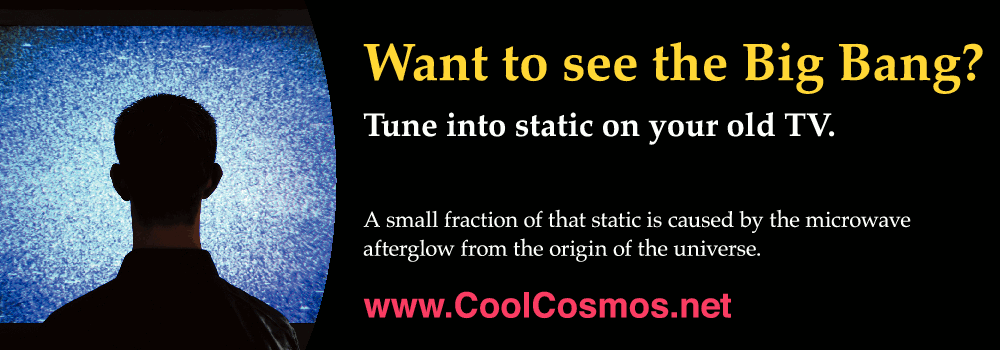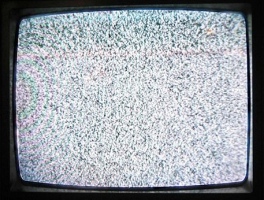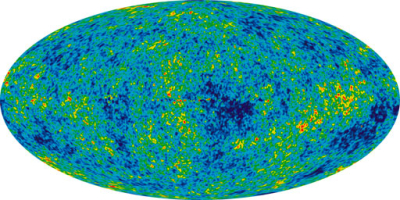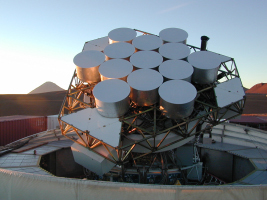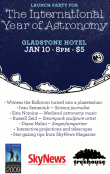![]() Listen to what one Toronto astronomer is discovering in a signal that dates back to the origins of the universe.
Listen to what one Toronto astronomer is discovering in a signal that dates back to the origins of the universe.
These days astronomers aren't just picking up signals from a time shortly after the universe began – they're creating maps of those signals to answer some of our deepest questions about the cosmos.
An old-fashioned TV with rabbit ears is designed to pick up very high frequency radio waves. When the TV is tuned to a channel for which there is no nearby broadcaster, the screen shows a lot of static. The static – also known as noise – is caused by random radio waves coming towards the TV from various manmade and natural sources, including deep space.
In the 1960's, Arno Penzias and Robert Wilson, two researchers at Bell Laboratories in New Jersey, began searching for sources of static for the purpose of improving satellite communication. They were searching in the "microwave" part of the radio spectrum, which lies at a somewhat higher frequency than a typical TV receives. What they discovered was that no matter where in the sky they pointed their special antenna it always picked up some microwave noise that could not be accounted for. Astrophysicists eventually realized that this noise was a predicted side effect of the birth of the universe billions of years ago.
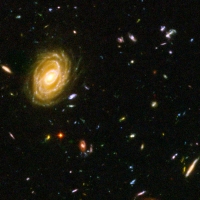
Distant galaxies from the Hubble Ultra Deep Field. Credit: NASA, ESA, S. Beckwith (STScI) and the HUDF Team.
How can such an ancient signal be picked up today? The answer is that the universe is a big place. Light or radio waves from distance galaxies must travel for millions or even billions of years to reach us. The more distant the source, the earlier a time it represents in the universe's history. In theory, it should be possible to look all the way back to the earliest times of the universe.
According to the Big Bang Theory, the universe was once a much smaller and hotter place, with all of its matter and energy concentrated in a white, hot soup of particles and radiation. As the universe expanded and cooled, it was no longer white hot, but filled with hydrogen gas, which later collected together to form the first stars and galaxies. Some of the static picked up by the old TV includes a bit of the white – hot light of the early universe, traveling through space for over 13 billion years. It no longer looks white hot because it's lost so much energy. In fact, it no longer looks like anything because it's now just microwave and radio noise (microwaves and radio waves are simply much lower – energy forms of light waves).
Since Penzias and Wilson made their big discovery (for which they won the Nobel Prize), astronomers have been trying to get a better and better look at this relic microwave noise. It's now known as the "cosmic microwave background" – CMB for short – because it's farther away than anything else that can be detected. The best views of the entire CMB come from orbiting spacecraft. Astronomers also use ground-based microwave detectors to study selected sections of the microwave background in detail.
Subtle features of the CMB can tell astronomers how much matter is in the universe and also how much "dark matter" – a mysterious, invisible substance that played a key role in the formation of galaxies. Observations of the CMB have also helped confirm the existence of "dark energy", a little understood form of energy that permeates space and is causing our universe to expand at an ever-accelerating rate. In the future, astronomers are hoping to learn more about the very beginning of our universe based on detailed properties of the CMB.
Select another story to learn more about how you are connected to the cosmos!







